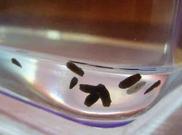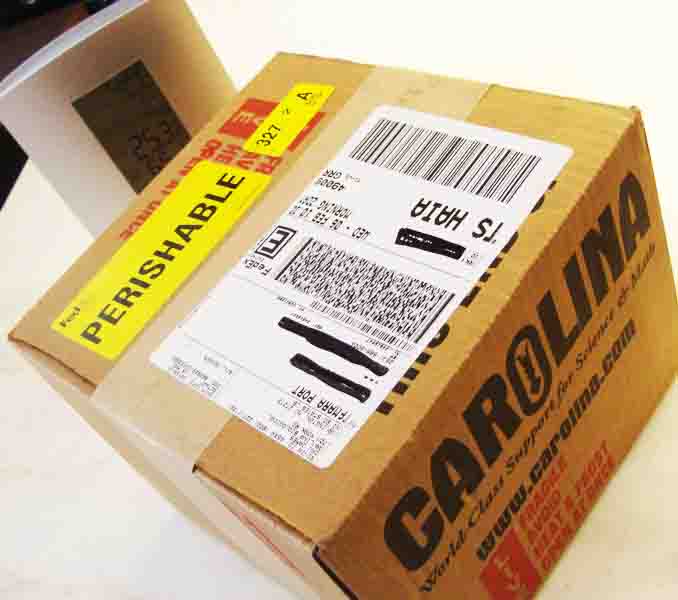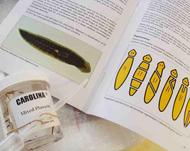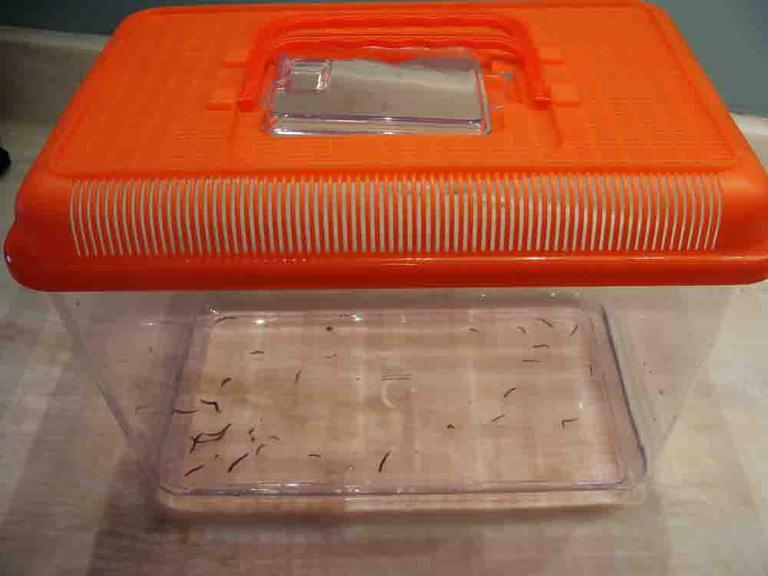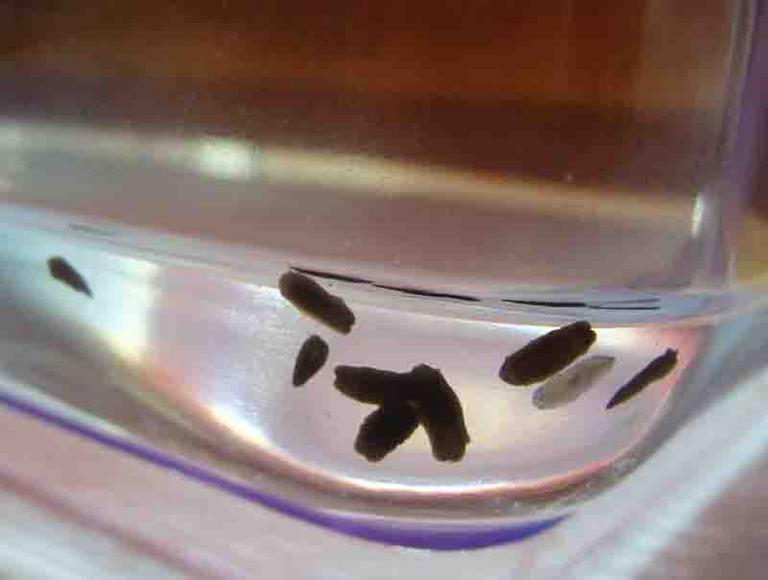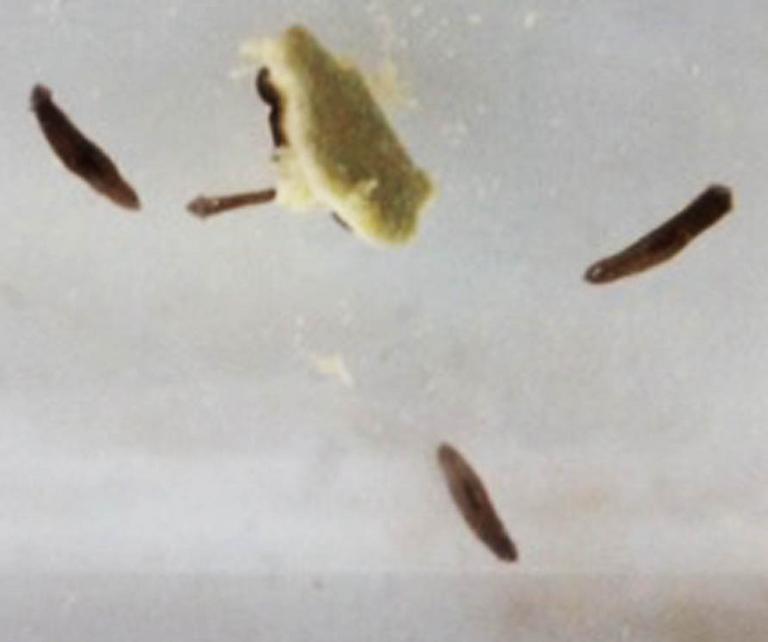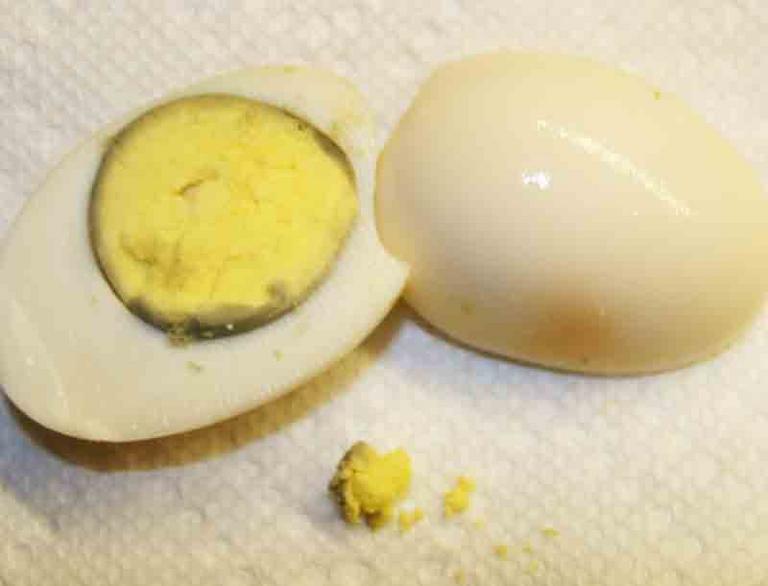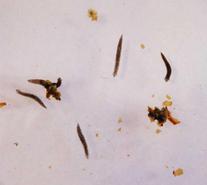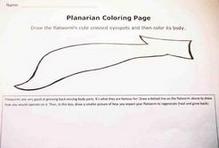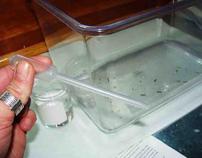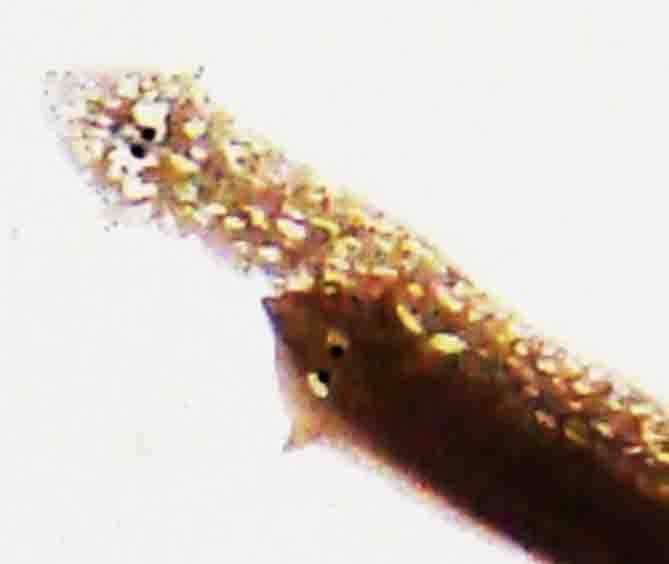 | ||||
Planaria Care
HOME LIFE SCIENCE OBSERVATIONS
How to Find and Take Care of Dugesia Flatworms
Kid Science from Science Prof Online
As a science educator and mom, I always look for ways to make science fun and interesting for my own elementary school-age children. This Kid Science area of the SPO website features our "Adventures In Flatworms."
How to Find and Care for Dugesia Flatworms
SPO VIRTUAL CLASSROOMS
 | ||||||
Page last updated 10/2014
Two days after placing our order, the flatworms arrived. They were shipped in a small plastic jar packed inside Styrofoam with a heat pack to keep them warm. In the photo above, you can see the display of our outdoor temperature behind the box...25 degrees Fahrenheit. Brrr!
We keep our planaria to a small plastic tank filled with about 1" (one inch) of spring water. Flatworms do not like the water to be too deep.
They like to rest in the corner of the tank.
The flatworm's new favorite food is crushed snail!
Where Can You Find Flatworms?
Freshwater flatworms are easy to find in nature. These little cuties often glide along the underside of the rocks, sticks and decomposing leaves found in ponds. You'll have to look closely, because, even full grown and stretched out to their maximum length, planaria are typically no longer than an inch. Making lures using chicken liver can also work to attract them.
We wanted to get flatworms during the dead of winter, so we ordered from Carolina Biological Supply Company. For about $20 we had 30 flatworms shipped to us.
This page has everything you need to know to find, house and feed Dugesia, a type of planarian flatworm commonly used in science classrooms and easy to keep at home.
The information on this page falls into three basic categories:
- How to find flatworms.
How to Take Care of Flatworms
Where do they live?
You can also use distilled water. Either can be purchased inexpensively from the grocery store. We do not use our tap water for the flatworms or for our bullfrog tadpoles because we have very hard well-water, and must use a water softener that adds salt (sodium chloride). Chlorinated city water can also harm flatworms.
How is the flatworms tank cleaned?
The flatworms are fed about once a week (see details below) and their tank is cleaned after feeding. We keep our flatworms in about two cups of water. If you keep yours in less water, you will need to clean more often. Before you can clean the tank, the flatworms must all be removed.
Catching the Flatworms: Prior to cleaning we move them to a small plastic jar, using a plastic pipette with the tip cut off to make a larger opening. First place a little water from the tank into the plastic jar. Then use the pipette to catch and transfer each flatworm.
Flatworms like to hang onto surfaces. We've found that the best way to gently dislodge and suck them up is to place the tip of the pipette underwater, by the flatworm, and squeeze the bulb of the pipette, to blow bubbles.
The bubbles disturb the flatworm. It reacts by letting go of the tank wall and making itself small and easy to suck up with the pipette.
Cleaning the Tank: Once the tank is flatworm-free, dump out the old water, and wash the tank in warm, slightly soapy water. Rinse the tank very well before adding new distilled or spring water to a depth of about one inch (1").
Returning the Flatworms to Their Clean Tank: The worms will now be trying to stick to the inside of the jar they were placed in for cleaning. Gently shake the jar to swish the water around and dislodge them. Then pour them into their clean tank. I usually use the jar to scoop up more water from the opposite side of the tank, cap and gently shake it again (or sometimes a few more times) to make sure I have rinsed all of the flatworms out of the jar, especially when I am working with tiny flatworms.
What do the flatworms eat?
Our captive flatworms are fed about once a week. It is recommended that they be given chicken or beef liver and hard-boiled egg yolk. We never have liver in the house, so we started by feeding them only egg yolk, just a few crumbles of it dropped into the tank, and they did just fine on this diet.
Since we had a snail population explosion in our tadpole aquarium, we decided to see how the flatworms like crushed snail, an animal found in their natural habitat. Apparently, flatworms think snail is delicious, because they flock to squashed snail remains!
More Flatworm Care & Kid Science Resources
- Carolina Biological Supply: You can order live flatworms or prepared slides of flatworms from these guys. They also offer a free Planaria Care Sheet.
- Ward's Natural Science also has free information of taking care of live planaria.
- Dugesia Planarian Flatworm Main Page from Kid Science of SPO.
- Planarian Reproduction & Regeneration from Kid Science of SPO.
 | ||||
ANOTHER SPO
HOME SCIENCE PROJECT
BULLFROG METAMORPHOSIS
We are raised bullfrog tadpoles and documented their metamorphosis into adult frogs!
to meet the bullfrogs!
PLANARIA UPDATE!
Latest Flatworm News
6/10/13
Planaria Winter Eggs & Babies!
This spring we welcomed a bunch of flatworm babies that hatched from crazy looking winter eggs. Check out the video below!
Our cross-eyes flatworms! Aren't they cute :)
- Home & School Science for Kids from Science Prof Online: The home experiments of a science teacher and her grade school-age children: tadpole metamorphosis, planaria flatworm experiments, microscopic pond life, microbiology for kids and links to child-friendly resources for exploring science.
 | ||||
Young children are natural born scientists, full of curiosity! Check out the at-home experiments and explorations of a scientist mom & her kids.
The SPO website is best viewed in Microsoft Explorer, Google Chrome or Apple Safari.
